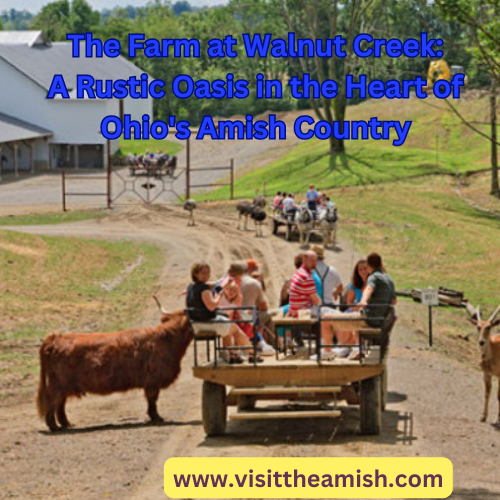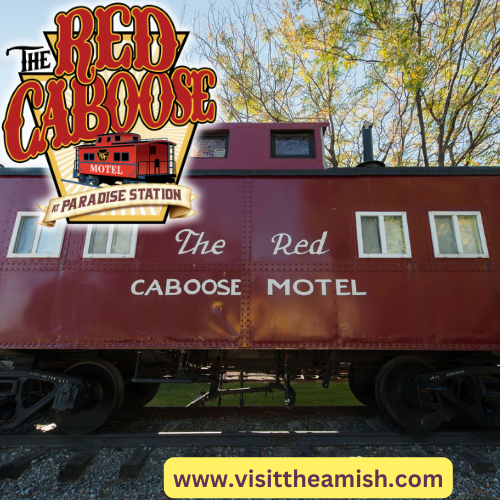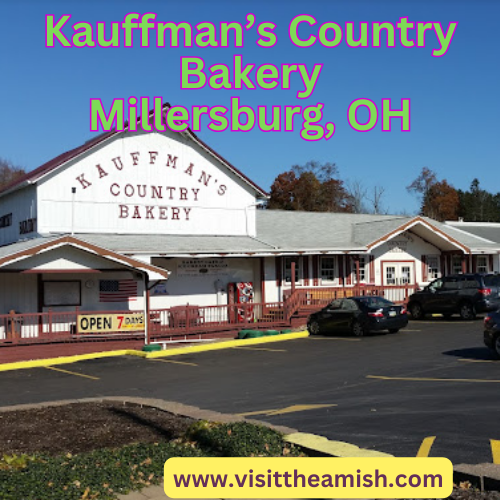Things to Do in Indiana’s Amish Country
Welcome to Indiana’s Amish Country, where time seems to stand still amidst lush green landscapes and a captivating way of life. Nestled in the heart of the Midwest, this serene and picturesque region holds a wealth of unique experiences waiting to be discovered. Whether you’re a history enthusiast, nature lover, or simply seeking a peaceful retreat, there are ten captivating things to do in Indiana’s Amish Country that promise to leave a lasting impression.
- Shipshewana: A quintessential destination in Indiana’s Amish Country, Shipshewana offers a plethora of attractions. Explore the bustling Shipshewana Auction & Flea Market, where you can find handmade crafts, fresh produce, and antiques. Don’t miss out on the delicious Amish-style meals at Das Dutchman Essenhaus or Blue Gate Restaurant & Bakery.
- Amish Acres Historic Farm: Step back in time at Amish Acres Historic Farm in Nappanee. Tour the preserved farmstead, experience traditional Amish activities, and enjoy a hearty meal at the on-site restaurant, featuring authentic Amish cuisine.
- Davis Mercantile: Located in Shipshewana, Davis Mercantile is a charming shopping destination filled with unique stores offering handmade crafts, quilts, furniture, and more. Stop by for souvenirs or to experience a taste of local craftsmanship.
- Yoder’s Meat & Cheese Company: Indulge in Amish-made delicacies at Yoder’s Meat & Cheese Company in Shipshewana. Sample a variety of cheeses, meats, and homemade goodies, perfect for picnics or gifts to take home.
- Menno-Hof: Gain insight into Amish and Mennonite history and culture at Menno-Hof in Shipshewana. Interactive exhibits and multimedia presentations provide an educational and immersive experience for visitors of all ages.
- Dutch Country Market: Located in Middlebury, Dutch Country Market offers a wide array of authentic Amish products, including baked goods, bulk foods, and handcrafted items. Be sure to try the fresh-baked pies and breads!
- JoJo’s Pretzels: Satisfy your snack cravings with a visit to JoJo’s Pretzels in Shipshewana. Watch as skilled artisans twist and bake traditional soft pretzels right before your eyes, and don’t forget to try their famous pretzel dogs.
- Essenhaus Village Shops: Browse through a charming collection of shops at Essenhaus Village Shops in Middlebury. From quilts to pottery to homemade jams, you’ll find a variety of Amish-made goods and souvenirs to treasure.
- Riegsecker Marketplace: Explore Riegsecker Marketplace in Shipshewana for a diverse selection of Amish-made furniture, home decor, and gifts. With multiple shops under one roof, it’s the perfect place to find unique treasures for your home.
- Dutchman Hospitality Group: With locations in Shipshewana, Middlebury, and nearby towns, Dutchman Hospitality Group offers a variety of dining experiences showcasing authentic Amish cuisine. Whether you’re craving a hearty family-style meal or a cozy bakery treat, you’ll find it here.
Exploring the History and Culture of the Amish Community

The Amish community in Indiana’s Amish Country has a rich history and a unique way of life that has captivated visitors for generations. Take a step back in time as you immerse yourself in their fascinating culture. Start your journey by visiting the Menno-Hof Museum, where interactive exhibits and multimedia presentations provide an in-depth look into the Amish faith, traditions, and values. Learn about their distinctive dress, simple way of life, and the importance of community.
Next, head to the Shipshewana area, known as the heart of Indiana’s Amish Country. Take a guided tour through the countryside, where you’ll see Amish farms, schools, and businesses. Witness the sight of horse-drawn buggies passing by and the sound of clip-clopping hooves on the road. Marvel at the beautifully maintained farms with their tidy gardens and traditional barns. Don’t be surprised if you encounter an Amish farmer working the fields with a team of horses; they still rely on traditional farming practices.
To truly understand the Amish way of life, consider staying at an Amish bed and breakfast. Here, you can experience firsthand what it’s like to live without electricity and modern amenities. Engage in conversations with your Amish hosts, who are always willing to share stories and answer questions about their lifestyle. This unique opportunity allows you to gain a deeper appreciation for their commitment to simplicity and community.
Visiting Amish Farms and Experiencing Rural Life
One of the most memorable experiences in Indiana’s Amish Country is visiting the Amish farms and experiencing rural life up close. Take a guided tour or embark on a self-guided adventure as you explore the scenic countryside. Visit working farms, where you can witness the Amish tending to their animals, plowing fields, and engaging in other daily activities.
During your visit, you may have the chance to try your hand at milking a cow or feeding baby farm animals. The Amish are known for their strong work ethic, and you’ll be inspired by their dedication and commitment to their way of life. Take a leisurely stroll through their gardens, where you’ll find rows of vibrant flowers and bountiful produce. Don’t forget to pick up a jar of homemade jam or a bouquet of freshly cut flowers as a memento of your visit.
For a truly immersive experience, consider participating in an Amish farm stay program. This allows you to live and work alongside an Amish family for a few days, helping with daily chores and experiencing their way of life firsthand. From tending to the garden to baking bread in a wood-fired oven, you’ll gain a deeper understanding of the Amish lifestyle and forge meaningful connections with your hosts.

Sampling Traditional Amish Cuisine and Homemade Treats
No visit to Indiana’s Amish Country is complete without indulging in the mouthwatering flavors of traditional Amish cuisine. From hearty comfort food to delectable homemade treats, the Amish are renowned for their culinary delights. Treat your taste buds to a feast of flavors as you explore the local restaurants and bakeries.
Start your day with a hearty breakfast at an Amish restaurant, where you can savor homemade biscuits and gravy, fluffy pancakes, and farm-fresh eggs. Don’t miss the chance to try their signature dish, “Amish peanut butter spread,” a creamy and sweet spread that pairs perfectly with fresh bread or crackers.
For lunch, head to one of the many family-style restaurants that offer an all-you-can-eat Amish buffet. Feast on traditional dishes such as fried chicken, mashed potatoes, and homemade noodles. Be sure to save room for dessert, as the selection of homemade pies and cakes is simply irresistible. From classic flavors like apple and cherry to unique options like shoofly pie and sugar cream pie, each bite will leave you wanting more.
To satisfy your sweet tooth, visit the local bakeries and shops that specialize in Amish-made treats. Sample freshly baked bread, cinnamon rolls, and donuts. Indulge in homemade fudge, chocolates, and jams that make for perfect souvenirs or gifts. The flavors and quality of these homemade treats are unparalleled, and you’ll be supporting local Amish businesses with every purchase.
Shopping for Handcrafted Goods and Amish-Made Products
Indiana’s Amish Country is a haven for those seeking unique, handcrafted goods and Amish-made products. Explore the quaint shops and boutiques that line the streets, where you’ll find an array of treasures waiting to be discovered. From handcrafted furniture and quilts to locally made soaps and candles, there’s something for everyone.
Start your shopping adventure in Shipshewana, known for its vast flea market and antique shops. Browse through rows of vendors selling everything from handmade Amish furniture to vintage collectibles. Engage in friendly conversations with the artisans and learn about the craftsmanship that goes into each piece. Don’t be surprised if you find yourself leaving with a one-of-a-kind piece that will become a cherished heirloom.

For those interested in quilting and textiles, visit the local quilt shops that showcase the Amish community’s talent and skills. Admire the intricate patterns and vibrant colors of the handmade quilts, which are often passed down through generations. If you’re lucky, you may even get the chance to observe an Amish woman working on a quilt and witness the meticulous attention to detail that goes into each stitch.
In addition to furniture and quilts, Indiana’s Amish Country is known for its high-quality handcrafted wooden toys, baskets, and pottery. These items make for unique gifts or souvenirs that reflect the region’s rich heritage and craftsmanship. Take the time to appreciate the skill and dedication that goes into creating these timeless pieces, and support the local artisans who continue to keep these traditions alive.
Exploring the Scenic Beauty and Outdoor Activities in the Area
Indiana’s Amish Country is blessed with breathtaking natural beauty that begs to be explored. From rolling hills and picturesque farmland to tranquil lakes and peaceful fishing spots, there are plenty of opportunities to connect with nature and enjoy outdoor activities.
One of the best ways to experience the beauty of the region is by taking a scenic drive along the idyllic backroads. Marvel at the stunning vistas of sprawling farmland, dotted with grazing cows and vibrant crops. Keep an eye out for horse-drawn buggies, which add to the charm and authenticity of the landscape. Consider renting a bicycle and pedaling along the peaceful country roads, taking in the sights and sounds of Indiana’s Amish Country at your own pace.
For nature enthusiasts, several hiking trails and nature preserves offer the chance to explore the region’s flora and fauna. Lace up your hiking boots and embark on a journey through lush forests, meandering streams, and open meadows. Keep your eyes peeled for wildlife, as you may spot deer, birds, and other creatures that call this area home. Don’t forget to pack a picnic lunch and find a scenic spot to enjoy the tranquility of nature.
If fishing is your passion, Indiana’s Amish Country has several lakes and rivers that offer excellent angling opportunities. Cast your line and try your luck at catching bass, catfish, or bluegill. Enjoy the peacefulness of the water and the thrill of reeling in a big catch. Whether you’re an experienced angler or a beginner, the serene fishing spots in the area provide a welcome escape from the hustle and bustle of everyday life.
Learning About Amish Traditions and Customs
Immersing yourself in the Amish way of life goes beyond visiting farms and sampling their cuisine. Take the time to learn about their traditions and customs, which have been passed down through generations. Gain a deeper understanding of their beliefs and values, and appreciate the simplicity and community that define their lifestyle.
Consider attending a cultural event or workshop that offers insights into Amish traditions. From quilting demonstrations and woodworking classes to Amish cooking lessons, these experiences allow you to learn from the experts themselves. Engage in conversations with Amish community members, who are always willing to share their knowledge and stories. Be respectful of their customs and traditions, and approach any questions with genuine curiosity and an open mind.
To further expand your understanding of the Amish community, consider reading books or watching documentaries that delve into their history and way of life. This will provide you with a more comprehensive perspective and enrich your experience during your visit to Indiana’s Amish Country.
Attending Amish Festivals and Events
Indiana’s Amish Country comes alive with vibrant festivals and events that celebrate the Amish heritage and traditions. Plan your visit around these special occasions to immerse yourself in the local culture and experience the community’s warmth and hospitality.
One of the most popular events is the Shipshewana Quilt Festival, held annually in June. This four-day celebration showcases the artistry and craftsmanship of Amish quilting. Admire the stunning quilt displays, attend workshops and lectures, and even participate in a quilt auction. This festival attracts quilting enthusiasts from around the world and provides a unique opportunity to appreciate the skill and creativity of the Amish community.
Another must-see event is the Shipshewana Flea Market, held every Tuesday and Wednesday from May through September. With hundreds of vendors offering a wide variety of products, this flea market is a paradise for bargain hunters and treasure seekers. From antiques and collectibles to handmade crafts and fresh produce, you’ll find something for everyone. Immerse yourself in the bustling atmosphere and enjoy the lively entertainment and delicious food stalls that add to the festivities.
Throughout the year, various fairs and festivals celebrate the Amish culture, including the Amish Acres Arts & Crafts Festival and the Nappanee Apple Festival. These events showcase the region’s talent in arts, crafts, music, and food. Immerse yourself in the lively atmosphere, enjoy live performances, and savor the flavors of Amish specialties. These festivals provide a unique opportunity to interact with the Amish community and gain a deeper appreciation for their contributions to the region’s cultural heritage.
Exploring the Nearby Attractions and Day Trips from Amish Country
While Indiana’s Amish Country offers a plethora of activities and experiences, there are also several nearby attractions and day trips that are worth exploring. Expand your itinerary and discover the hidden gems that lie beyond the borders of this serene region.
Just a short drive away is the city of Goshen, known for its vibrant arts scene and historic downtown. Explore the local art galleries, boutique shops, and cafes that line the streets. Visit the Elkhart County Historical Museum to learn about the region’s history and heritage. Don’t miss the chance to catch a live performance at the historic Goshen Theater, which hosts a variety of shows throughout the year.
If you’re a car enthusiast, a visit to the Auburn Cord Duesenberg Automobile Museum is a must. Located in Auburn, Indiana, this museum showcases a stunning collection of classic and vintage automobiles. Marvel at the craftsmanship and design of these iconic cars and learn about the rich automotive history of the region.
For those seeking outdoor adventures, the Potawatomi Wildlife Park in Tippecanoe is a great day trip option. This 317-acre park offers hiking trails, fishing opportunities, and educational programs that highlight the area’s natural beauty and wildlife. Explore the diverse ecosystems, including wetlands, prairies, and forests, and observe native plants and animals in their natural habitat.
Conclusion and Final Tips for a Memorable Visit to Indiana’s Amish Country
As your journey through Indiana’s Amish Country comes to an end, take a moment to reflect on the memories you’ve created and the experiences you’ve had. The tranquility and charm of this region, coupled with the rich Amish heritage, have left an indelible mark on your heart.
To ensure a memorable visit, consider these final tips. Plan your trip during the spring or fall when the weather is mild, and the countryside is adorned with vibrant colors. Be respectful of the Amish community’s privacy and customs, and always ask for permission before taking photographs. Dress modestly when visiting Amish farms and businesses, and adhere to any specific guidelines or rules that may be in place.
Remember to support the local businesses and artisans by purchasing handmade goods and Amish-made products. Your contributions directly benefit the Amish community and help preserve their way of life.
Come and experience the tranquility and charm of Indiana’s Amish Country. Embark on an unforgettable journey that will leave you enchanted, rejuvenated, and inspired. Whether you choose to explore the history and culture, indulge in traditional cuisine, or simply relax amidst the scenic beauty, Indiana’s Amish Country has something for everyone. Discover the magic of this timeless destination and create memories that will last a lifetime.






































